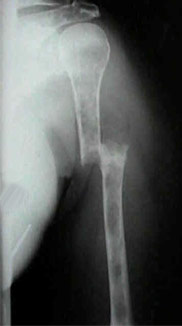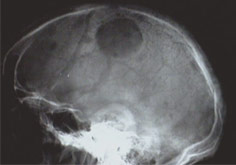Multiple
Myeloma
is a
malignant
or
cancerous
condition
of the
plasma
cells of
the
blood.
It is
also
called
Plasma
cell
Myeloma.
The word
Myeloma
pertains
to the
cells of
bone
marrow.
The bone
marrow
is a
soft
substance
within
the
bones
which
manufacture
all
|
kinds of blood cells.The basic cells are called stem cells. Some of the stem cells develop into small white cells, also called as Lymphocytes. The lymphocytes are of two types, B Lymphocytes and T Lymphocytes. (They are also called B cells and T cells). The B cells, further grow into Plasma cells, when the foreign substance (antigen) or bacteria enter the body, the B cells develop into Plasma cells to form what is called as Immunoglobulins (antibodies), to fight against the antigens or infections. The Immunoglobulins are denoted as Ig, which are of five major types: IgG, IgA, IgM, IgD and IgE.
In
short,
the
plasma
cells
have the
capacity
to turn
into the
Immunoglobulins
(Ig), as
a part
of the
defense
mechanism
of the
body.
These
plasma
cells
when
turn
cancerous,
it is
called
Multiple
Myeloma.
These
cancerous
plasma
cells
keep
multiplying
rapidly
and
travel
in the
blood
stream,
damaging
body
tissues.
The
malignant
plasma
cells
produce
too many
(multiple)
Immunoglobulins
which
are
actually
not
required
by the
body.
This
entire
condition
is
called
Multiple
Myeloma.
Multiple
Myeloma
is
nothing
but the
cancer
of the
plasma
cell, an
important
part of
the
immune
system
that
produces
immunoglobulin
(antibodies)
to help
fight
infection
and
disease.
Unchecked
overgrowth
of these
cells
leads to
multiple
tumors
and
lowered
immunity.
The
tumors
invade
the hard
surface
of the
specially
the
large
bone,
spreading
into the
cavities
of the
bones.
|
 |
|
|
|
Multiple
Myeloma
is the
second
most
common
blood
cancer,
after
Non-Hodgkin's
Lymphomas.
About
13000
new
cases of
MM are
reported
every
year in
the US.
It is
relatively
more
common
amongst
the
Americans
versus
their
Asian
counterpart.
It is
more
common
in men,
after 60
years of
age.
The
exact
cause
for MM
is not
yet
clearly
understood.
The
common
factors
influencing
the
development
of MM
are
genetic
tendency,
radiation,
chemicals
(herbicides,
insecticides,
petroleum
products,
heavy
metals,
plastics)
, and
virus.
The
clinical
symptoms
often
are
vague or
no
symptoms
in the
early
stage of
MM.
Some
of the
presenting
symptoms
are:
1.
Severe
lower
back
pain or
rib pain
2.
Anemia
and
lowered
immunity
leads to
weakness
and
tendency
to
frequent
infections,
as the
production
of
Immunoglobulins
is
disturbed.
Role
of
Homoeopathy
for
Multiple
Myeloma:
 |
Multiple
Myeloma
being a
chronic
difficult
disease
of
unknown
origin,
largely
affecting
the
vital
functions
at the
constitutional
and
immunological
level,
the
homoeopathic
approach
is, in
turn,
constitutional.
The
treatment
is aimed
at
controlling
the
disease
process
of
multiplication
of the
malignant
cellular
overgrowth
and
hence,
trying
to keep
a check
on the
cellular
destruction.
Also,
the
medication
is aimed
at
controlling
the
spread
of the
disease. |
|
|
There is
no major
study
done to
evaluate
the role
of
homoeopathy
for a
series
of cases
of MM.
However,
our
brief
experience
is
suggestive
of using
homeopathy
as an
important
supportive
measure
during
all the
stages
of
Multiple
Myeloma.
Some
research
is
likely
to throw
light on
a better
defined
role of
homoeopathy.
In the
light of
the fact
that
homoeopathy
has an
established
role in
the
treatment
of
various
immunologically
mediated
diseases,
Multiple
Myeloma
patients
should
not be
deprived
of the
benefits
of
homoeopathy.
Homoeopathy
is safe
and can
be taken
along
with the
traditional
medicines
for the
treatment
of
Multiple
Myeloma.
Some of
the
commonly
indicated
medicines
for
Multiple
Myeloma
are
Carcinosin,
Thuja,
Phosphorus,
Radium
bromatum,
etc.
depending
on the
indications
which
are
based on
a
multi-factorial
constitutional
guidelines. |
|
|
|
Click
here for Case
Studies |
|
|




















